It most certainly is one of the Top #1 nightmares for all of us: Sailing out on the high seas, a big storm is raging on for hours, ice-cold rain is battering off the skin of our blood-red freezing faces. We have sent our family down below already, closed the door to take the helm, running before a Force 10 wind. Waves, as high as a house, running up against our stern, intimidatingly high, growling and hollering, kicker our little catamaran around like a nutshell. Suddenly, a huge wave, higher than the others, comes in, breaking its dozen tons of greenish, boiling water over our stern, the boat is lifted, broaches, flips on its size and capsizes …
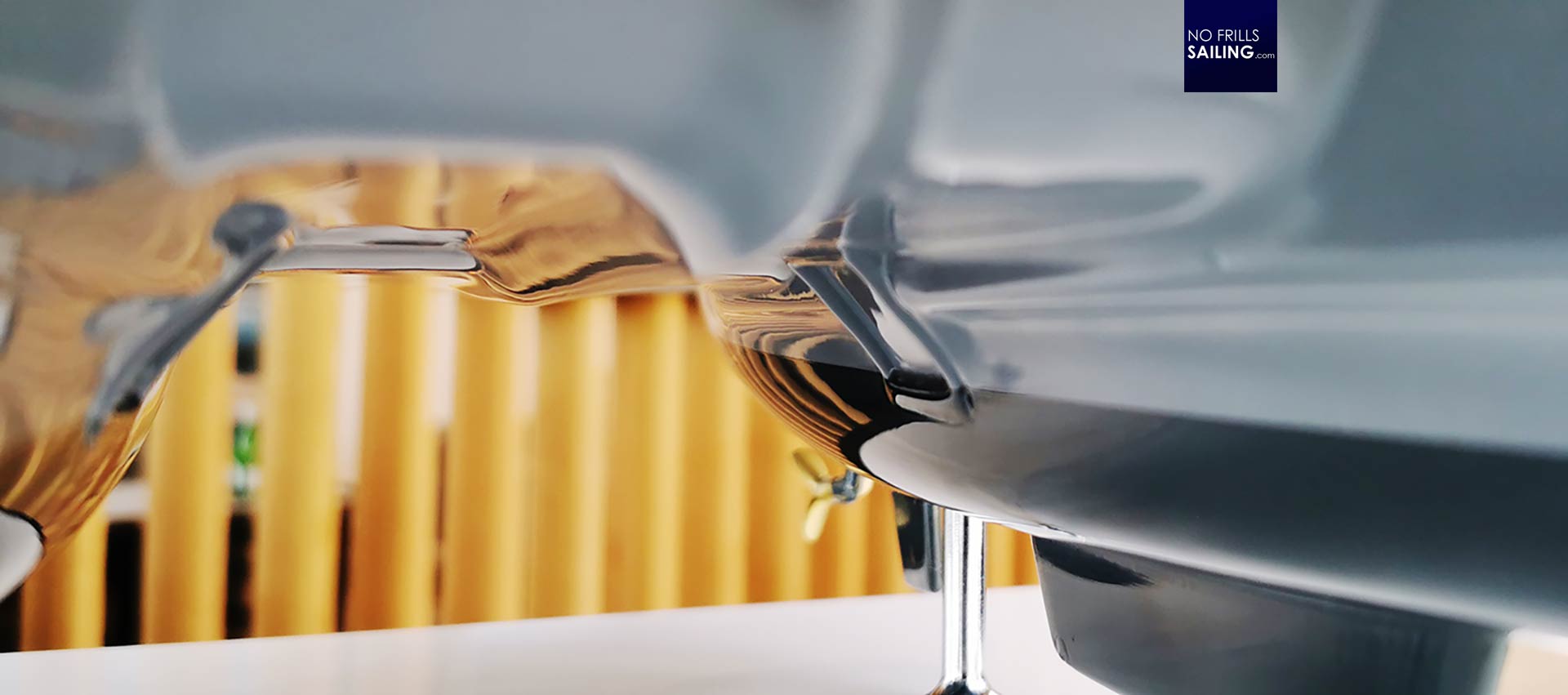
It is really a very frightening prospect. Going overboard and being lost at sea is one of the fearful fates, being trapped inside a capsized boat is another. There are many films depicting those incidents, some fictional, some reality, like Simon LeBon´s hair raising story aboard DRUM. The same way I am interested in codes of conduct how to behave in such situations, for example as I had tested a life jacket, a survival suit or how to capture and rescue a MOB I am also interested in this capsizing scenario.
Answering an open question
You may remember my article on “how to escape a capsized catamaran” from several months (oh boy, over two years in fact!) ago. In this I showed in a brand new Excess 11 cat how in the event of a capsizing the trapped crew inside the cat is supposed to leave the boat. It´s really a situation I hope nobody of us will find ourselves in, but as with all safety precautions, better be prepared than sorry. In this I lately discovered in our shipyard´s storage that we did have one escape hatch from an actual catamaran in stock. It´s an unused and never to be used again part, too precious to simply throw away, but never to be fitted a boat again.
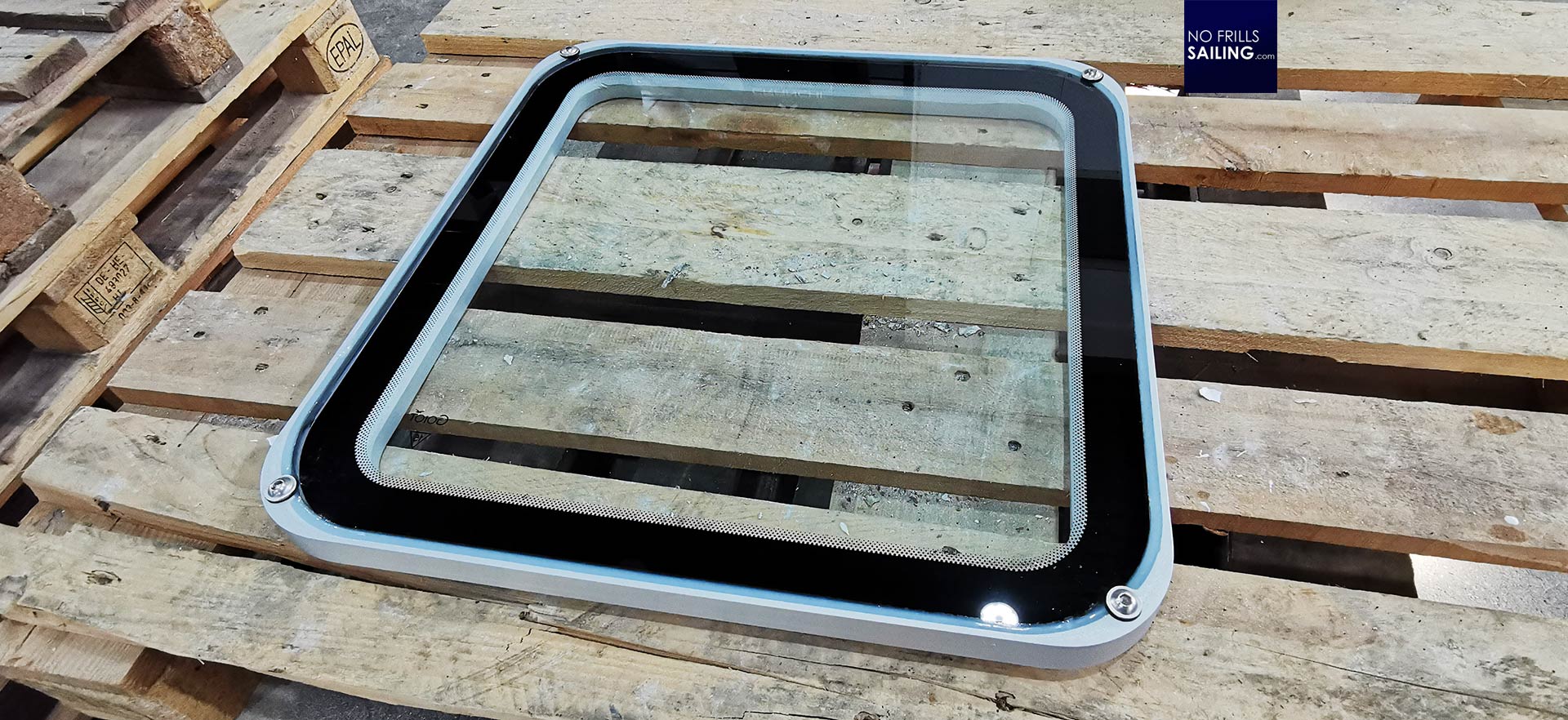
Well, I thought, why not do a follow-up on my “escape”-article and really test it? I mean, when do we really get the chance to test things for real? In the case of a real emergency, you certainly will be overwhelmed by the specifics of the situation. Standard procedures therefor should be an automatism so that you can focus on solving the real bad things. Just as I suggest my freshly baked owners to real-life test their new life jackets in a drill or even train my own kids, why not use the chance to set up a test-rig with this catamaran emergency exit?
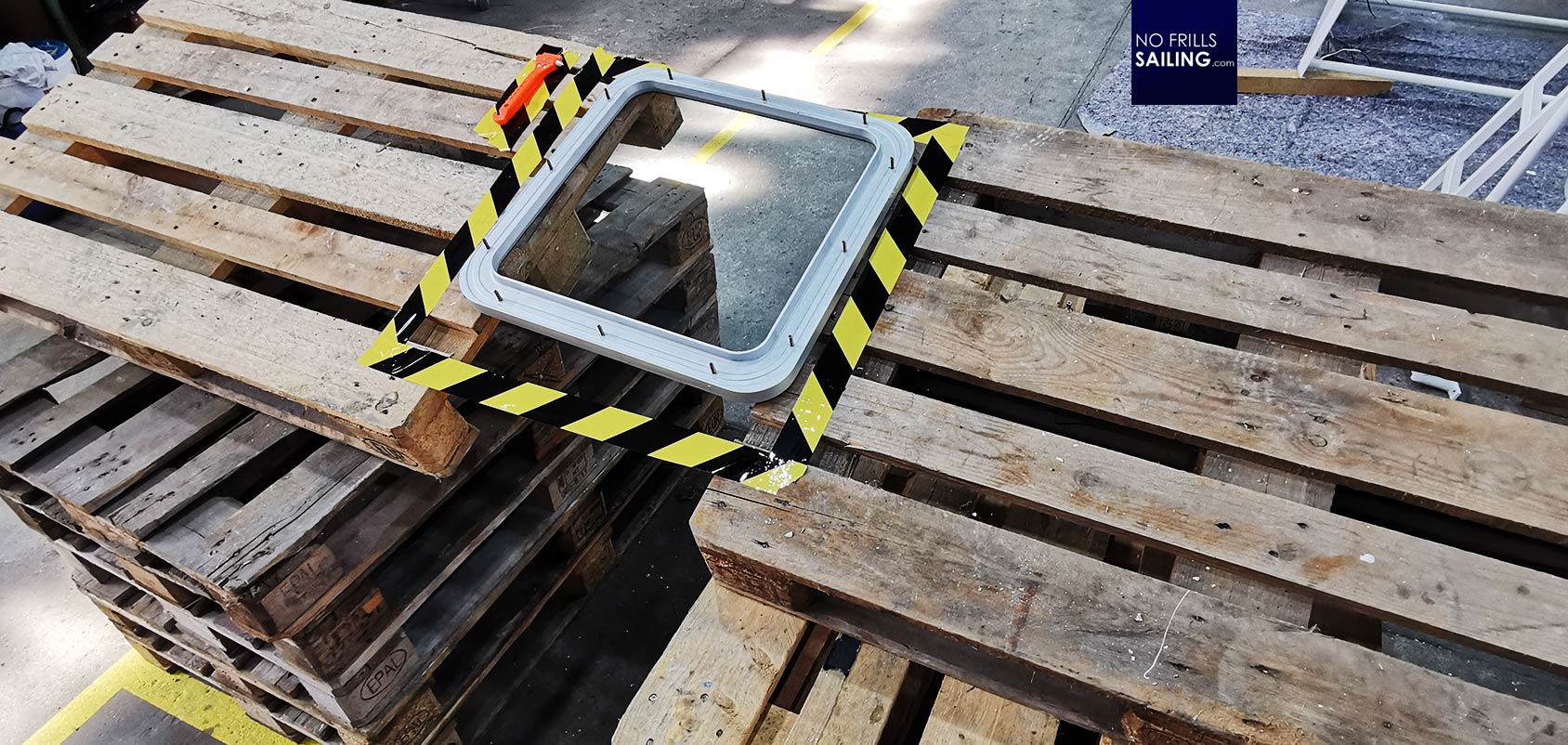
So we piled up some wooden pallets on top of which I placed the emergency exit. This is in fact a very heavy, rugged product. In our case made by Goiot. It consists of a heavy – steel? – frame, a number of thick screws which connect the hatch/window to the boat. The glass is tapered and adheres to safety standards. As the window is facing to the water an is not very far above it, it should be very, very strong to withstand the smashing of tons of violent water against it but also possible collisions with flotsam. On the one hand it must be very strong, on the other hand it should be “easy” to break it to leave the capsized cat and crawl onto the hull to reach for the life raft.
Downside up: Imagining a capsizing
First of all, when a boat capsizes, imagine the greatest turmoil and chaos aboard. Supposedly, your boat has already been beaten heavily by a storm, highest of waves and violent rocking. The mast hast gone in the course of a capsizing (many do). You, your family members – kids maybe -, the crew or your guests are already stressed to the limits or beyond, broken in the course of the long hours of that horror. During the storm and certainly in the course of the capsizing event there´s maximum violence inside. In a matter of seconds, the boat is harshly turned by a mighty wave.
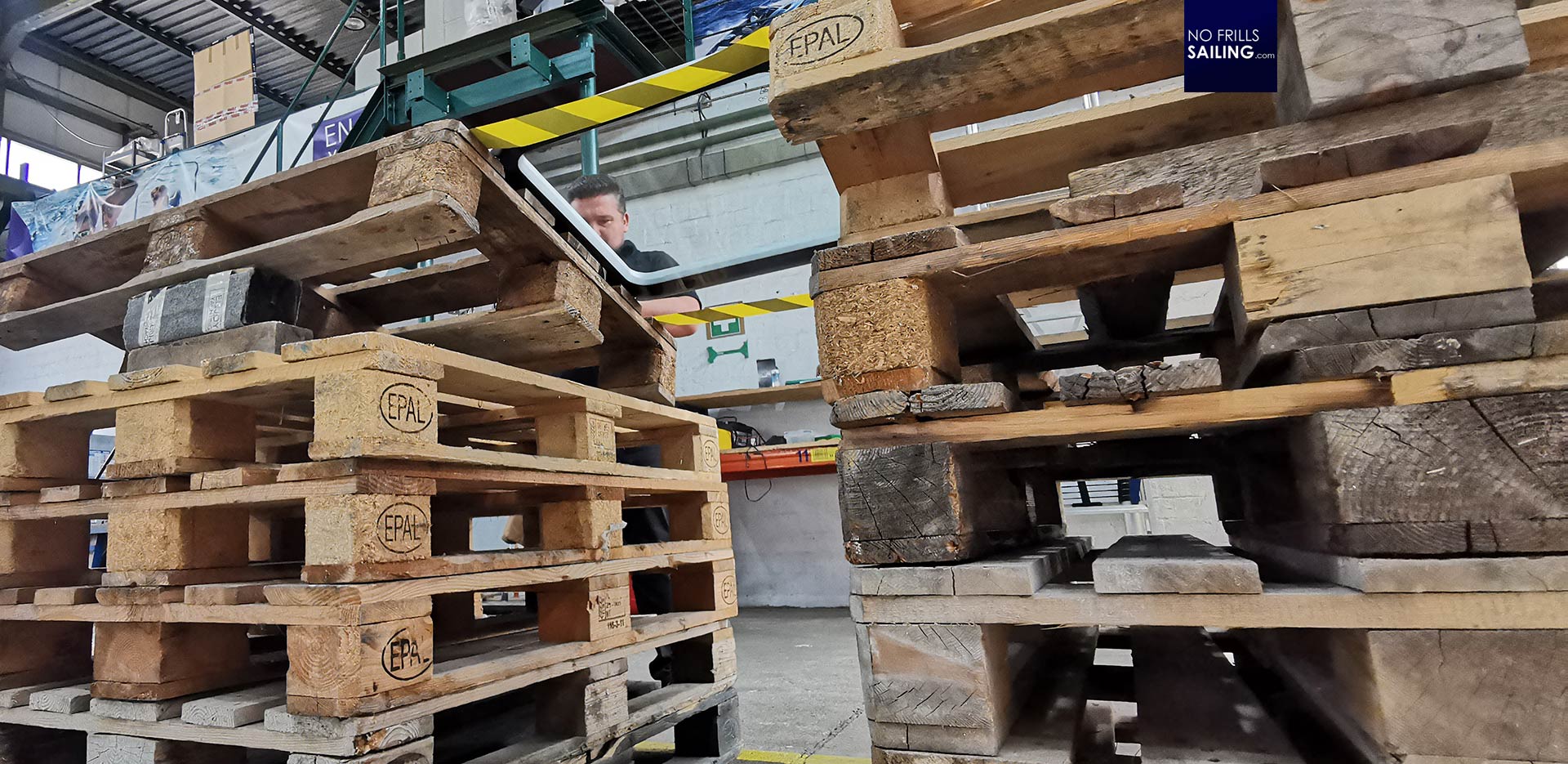
You will be thrown about within the boat: Lucky who at this moment is in his cabin and not in a large, voluminous saloon. The distances to fall are greatest in the saloon – even more so in a catamaran where the lofty main decks resemble dancing halls. The adjoining galley does not make things easier: Cutlery, dishes, provisions, heavy pans or bottles will be thrown out of their stowage in the course of the turnover and flying around with you. Best chance to get seriously injured. A scenario of pure horror: More so if I imagine having my kids aboard and being separated from them in such an event.
Upside down: Get out fast!
Apart from the horrors of such a scenario, as a family man and father, this is something that breaks my heart. So, better be cool and cold-blooded and not thing too much of it. Let´s stay calm and look at the situation after the actual capsizing: Our boat is turned upside down. What used to be our former ceiling is now the deck. What was inside the cupboards and lockers is now scattered around. We find ourselves dizzy and disoriented – the violent shaking of the boat did not stop because the storm is raging on outside. Maybe we are injured, broken limbs or bleeding. In a catamaran, it is also likely that our kids are trapped alone in the opposite hull. Now, water is entering the boat, slowly maybe, but surely, we are sinking. Leaving the boat and getting to the life raft has number one priority. Smashing the escape windows is our only way out – take the hammer!
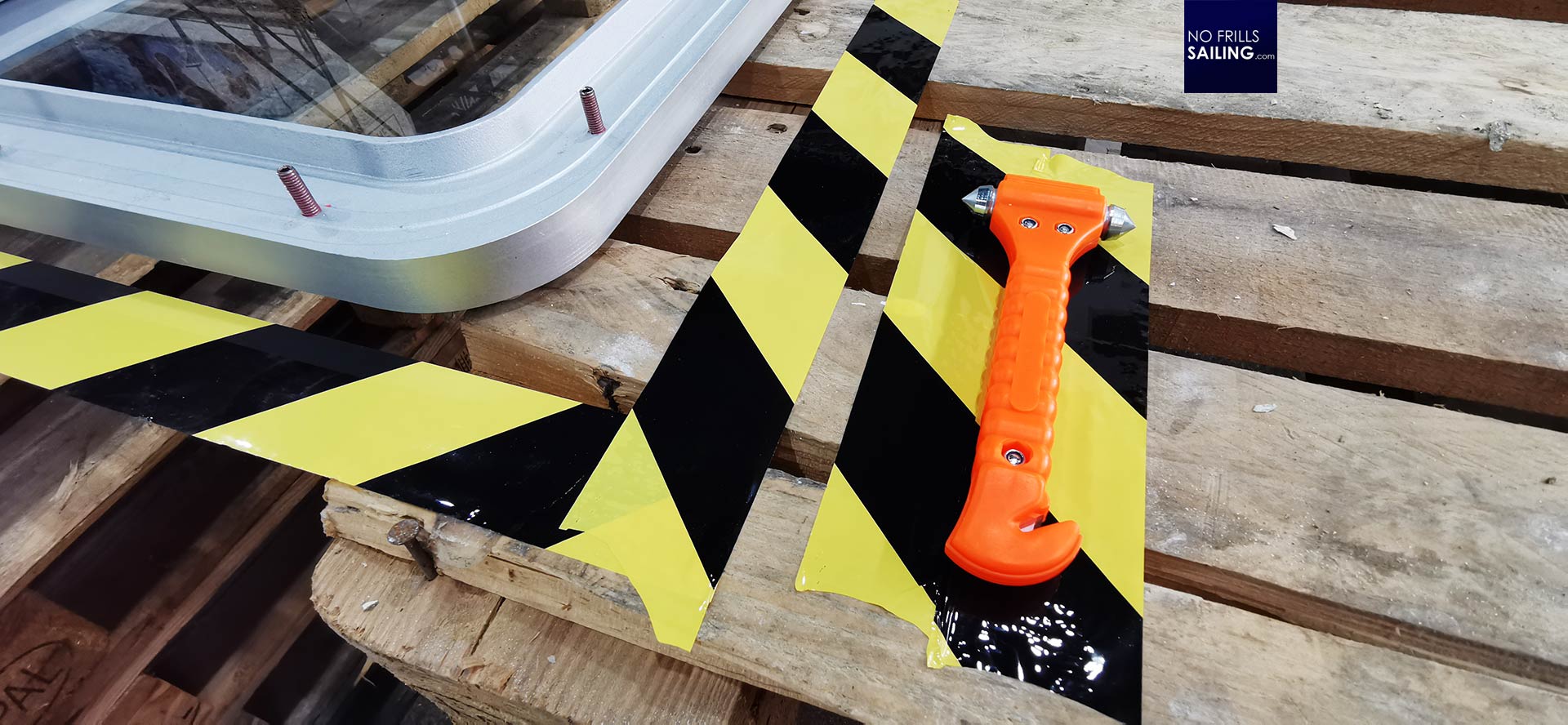
Catamarans are build so that the crew can leave the boat via escape hatches. The area between the two hulls – at least in the Excess 11 – has a non-skid surface and it is advised to fit a safety line to the loopeyes on either side of the hulls. From here, it´s just a few meters to the stern where the life raft is mounted to have it released and activated. But first you have to get outside. And this is what I wanted to test: How easy is it to literally crush such a safety window?
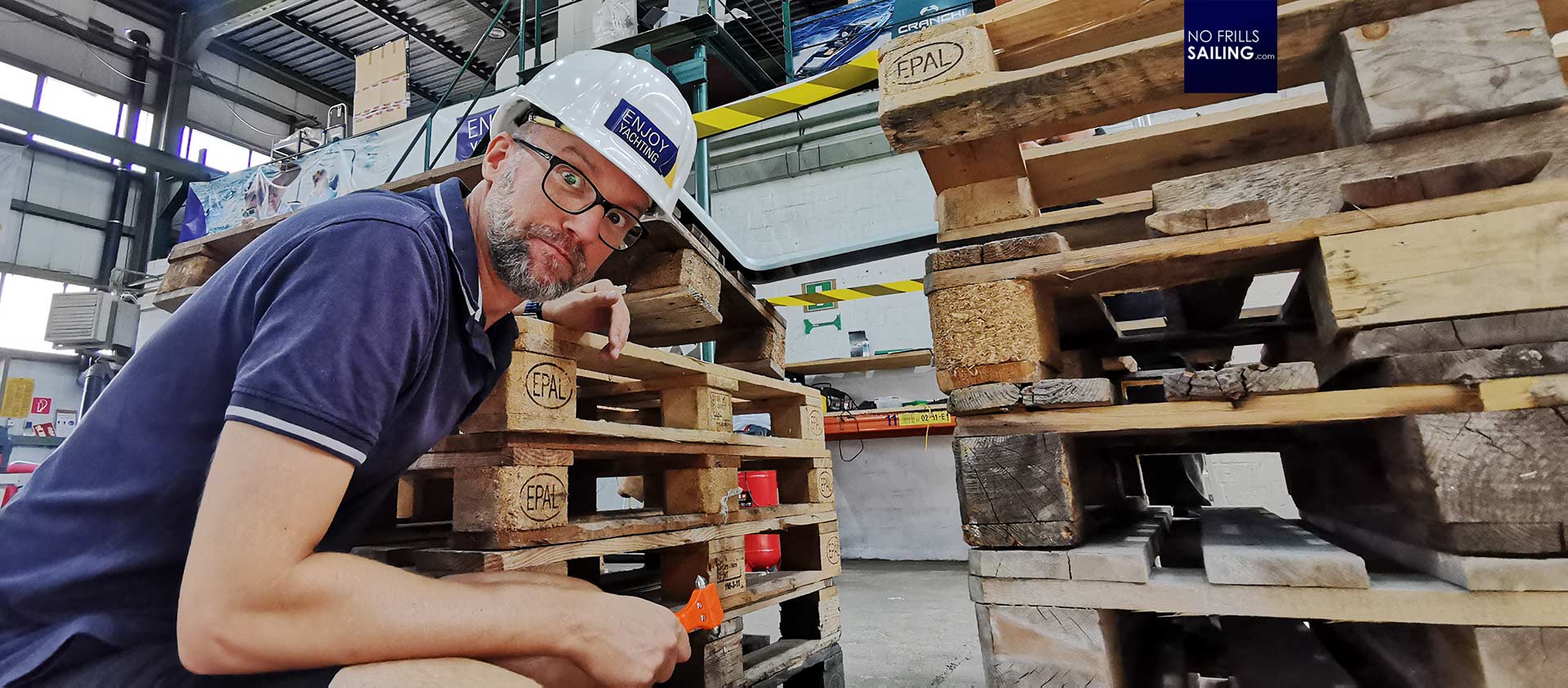
As the window will now be overhead, I kneel down underneath the glass, take the hammer and prepare myself to smash it. I´ve never done this before, smashing such a window. Let alone a tapered one with safety glass. Will it shatter? Will the broken glass explode down onto me? I don´t think so and that is why I take this a bit lighthearted (which is a mistake!) I neither wear safety glasses, nor gloves or protective clothing. On the contrary: I re-enact a sailing-situation: Shirt, shorts and I am literally on my bare feet. At least I wear a helmet. So please: Do not try this at home (or in your boat)!
Smashing the escape safety windows of the catamaran
Those hatches, which are in the closest sense of the word no hatches because they cannot be opened, are made of strong tempered glass. The adhere to the highest safety standards as they are mounted facing downwards in the catamaran and are subject to the open seas rolling and beating the hulls from below. So on the one hand these windows must be strong enough to withstand the rolling seas and maybe some flotsam to collide with, on the other hand they must apparently be opened with ease in the case of such a horrific event.
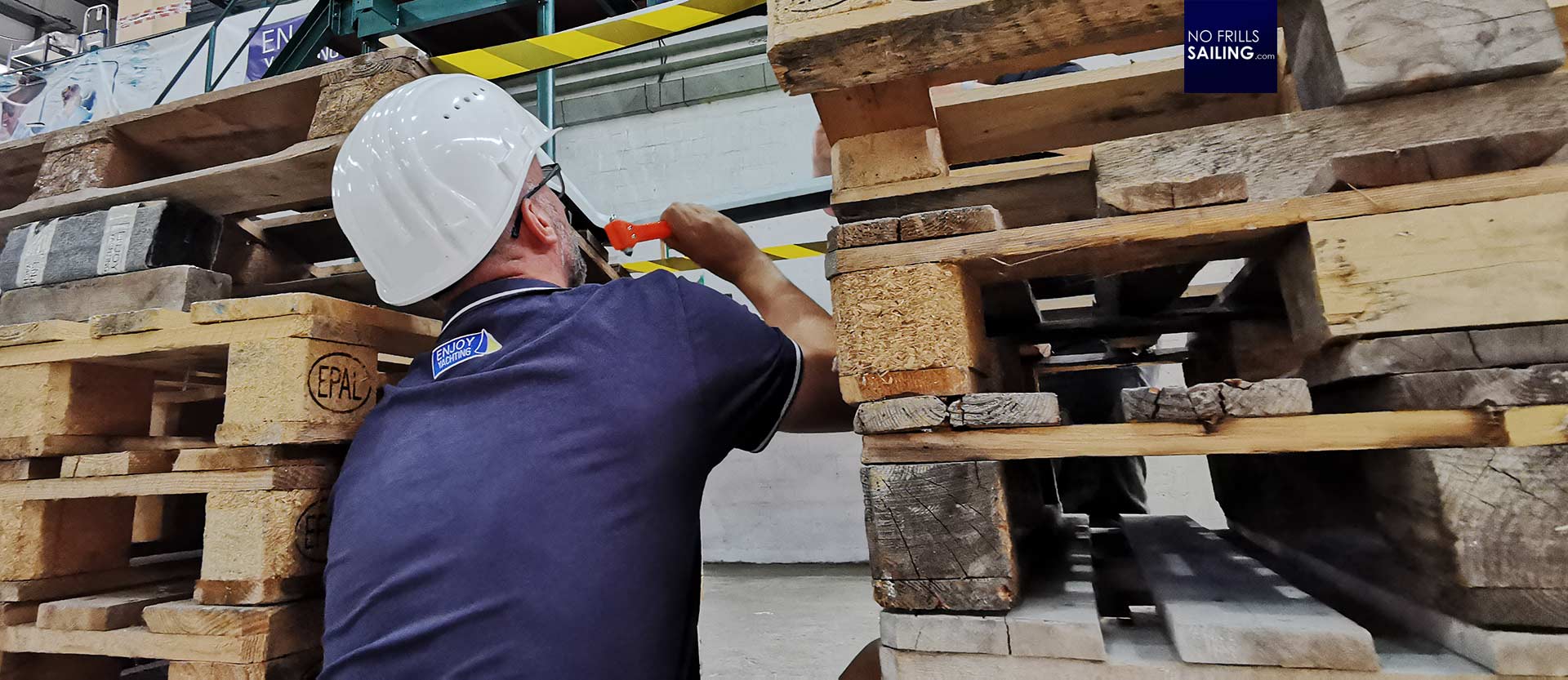
To ensure this, just near the emergency escape window of the Excess 11, to be precise, underneath the step of the entryway from saloon to the hulls, a hammer is provided. Since we cannot test this on a real catamaran, I´ve brought the emergency exit hammer from my car which is essentially the same, maybe a bit shorter and lighter. Now, what interests me most is the answer to the following question: If the catamaran has capsized and we are now standing or sitting on the former ceiling, the escape hatch will be above us. Smashing it with the hammer would mean – at least in my imagination – that the shattered glass will fall down. Fall down on the one shattering it. Or won´t it because the glass will not shatter into thousand pieces? Let´s find out!
Hard work …
The picture might convey a comical situation and to a certain degree it indeed was: At first I hit the glass pretty lousy, not putting too much energy into the hammering. I thought – conveyed by movies of all sorts – that the glass when hit with a hard spike may be shattering to pieces instantly. Well, it didn´t. I had to hit harder. Time and again. Nothing happened.
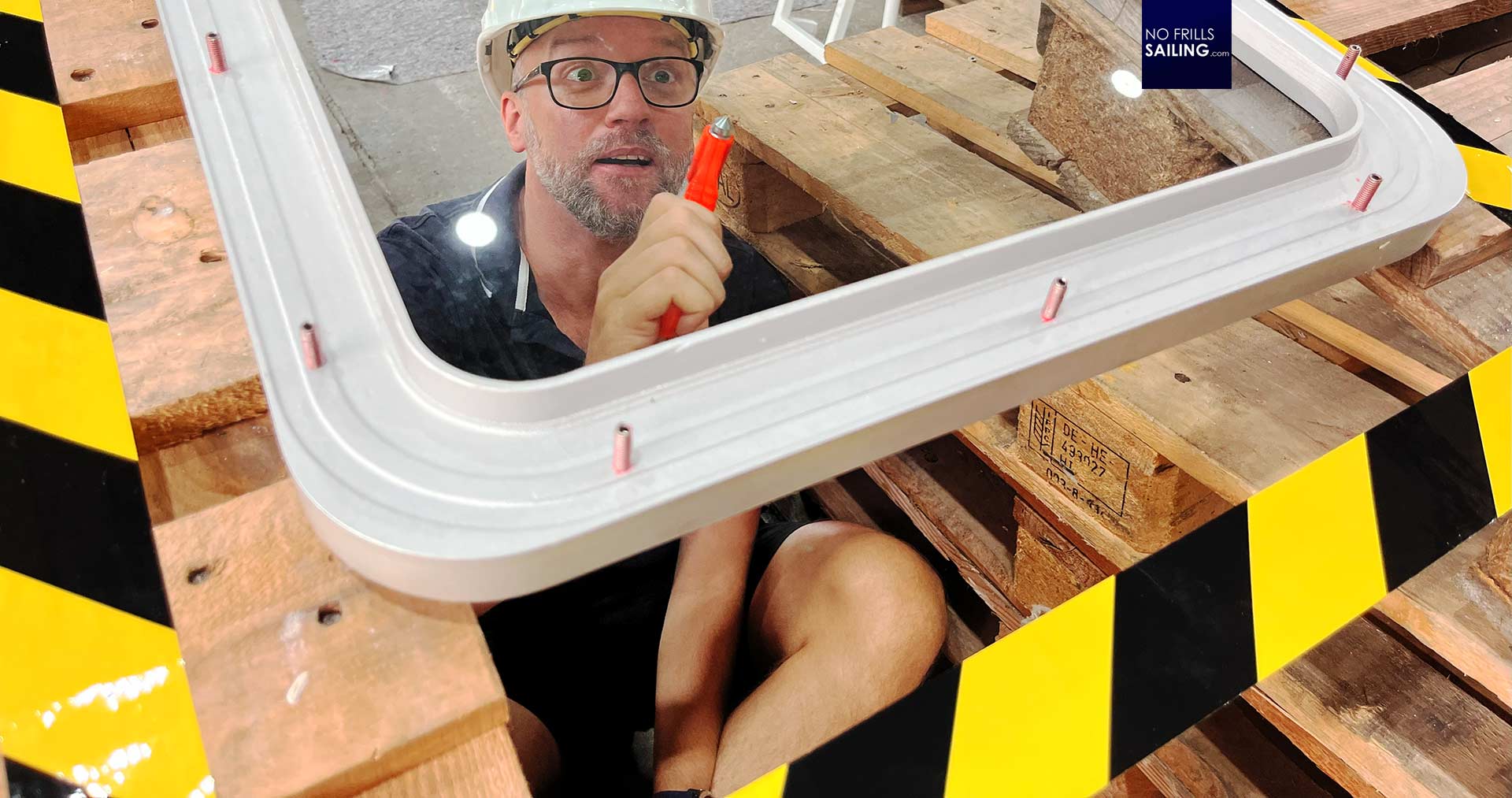
I interrupted the test and paused: Little, tiny bits and pieces had already come off the glass. Maybe it was the excitement, maybe the yelling of my two photographers (I couldn´t take pictures and hammer at the same time), but already my right hand was bleeding out of little cuts. Four cuts from splinters which had fallen down in the hammering hand. By firmly having the hammer in my hand, I grinded the splinters into my skin. Oh my. Now, why isn´t the glass shattering?!?
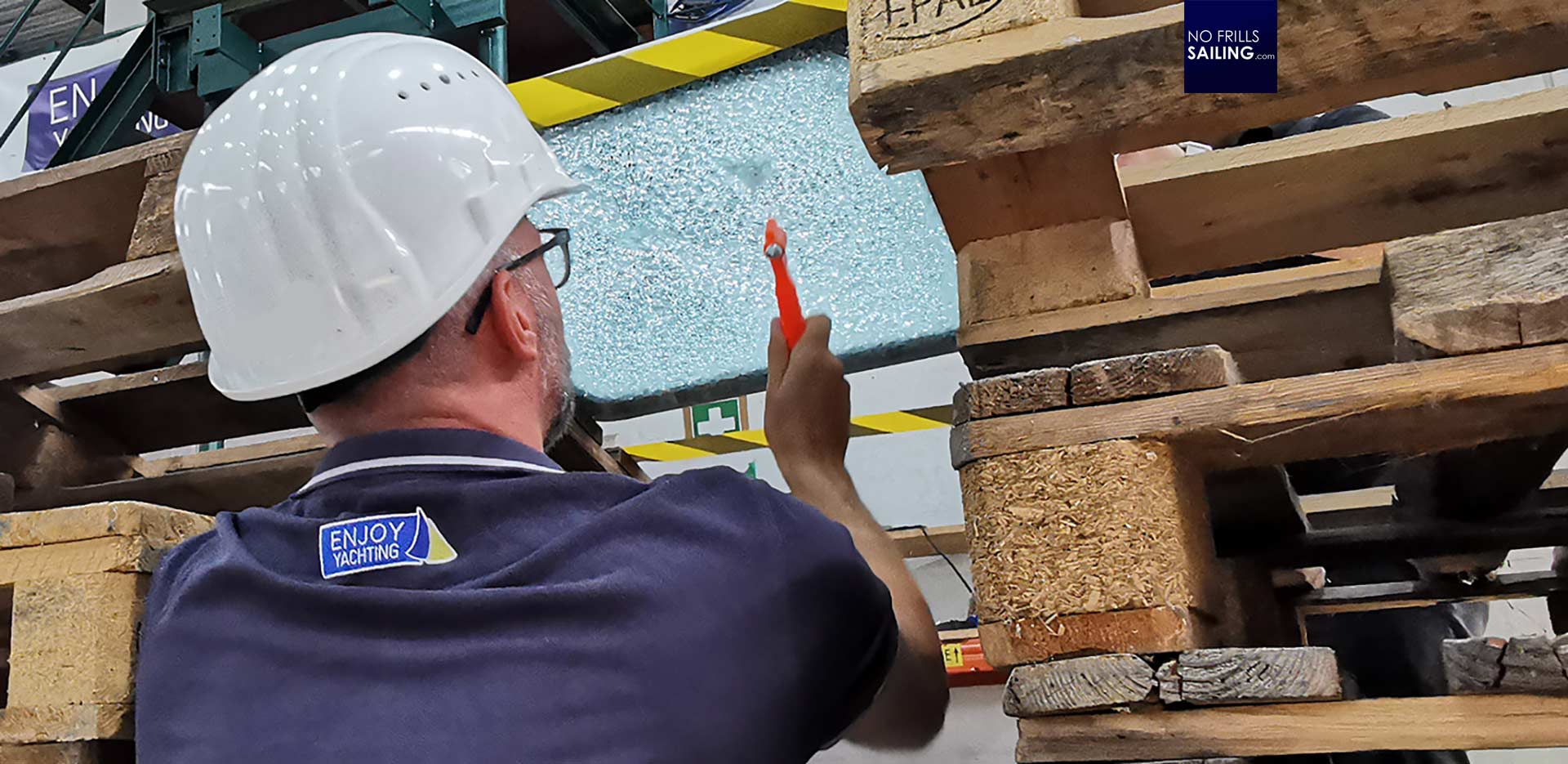
I resumed hammering and put in more efforts and energy into the hits. Suddenly the clear glass spung and the whole window turned milky. I had finally broken the glass! I paused again because I thought the whole window might fall out, onto me. So I took myself a bit away from exactly underneath the hatch. Being barefoot, this was a bad idea: I immediately received some cuts to my feet. Stupid guy! I hammered a dozen or so times more but essentially, apart from breaking up more splinters, nothing happened.
Wondering what could be wrong …
Now, maybe the problem was that – in the whole excitement of the test – I had put the window to test from the wrong side. Instead of hammering the inside part of the window, I had all the time tried to break into the boat, not out. I think that it should be working both ways, but I crawled back standing up from underneath the test rigging and at first got rid of the splinters which covered my body. I stood before the test-setup, flipped the hatch and again battered it with my hammer. This time from the right side.
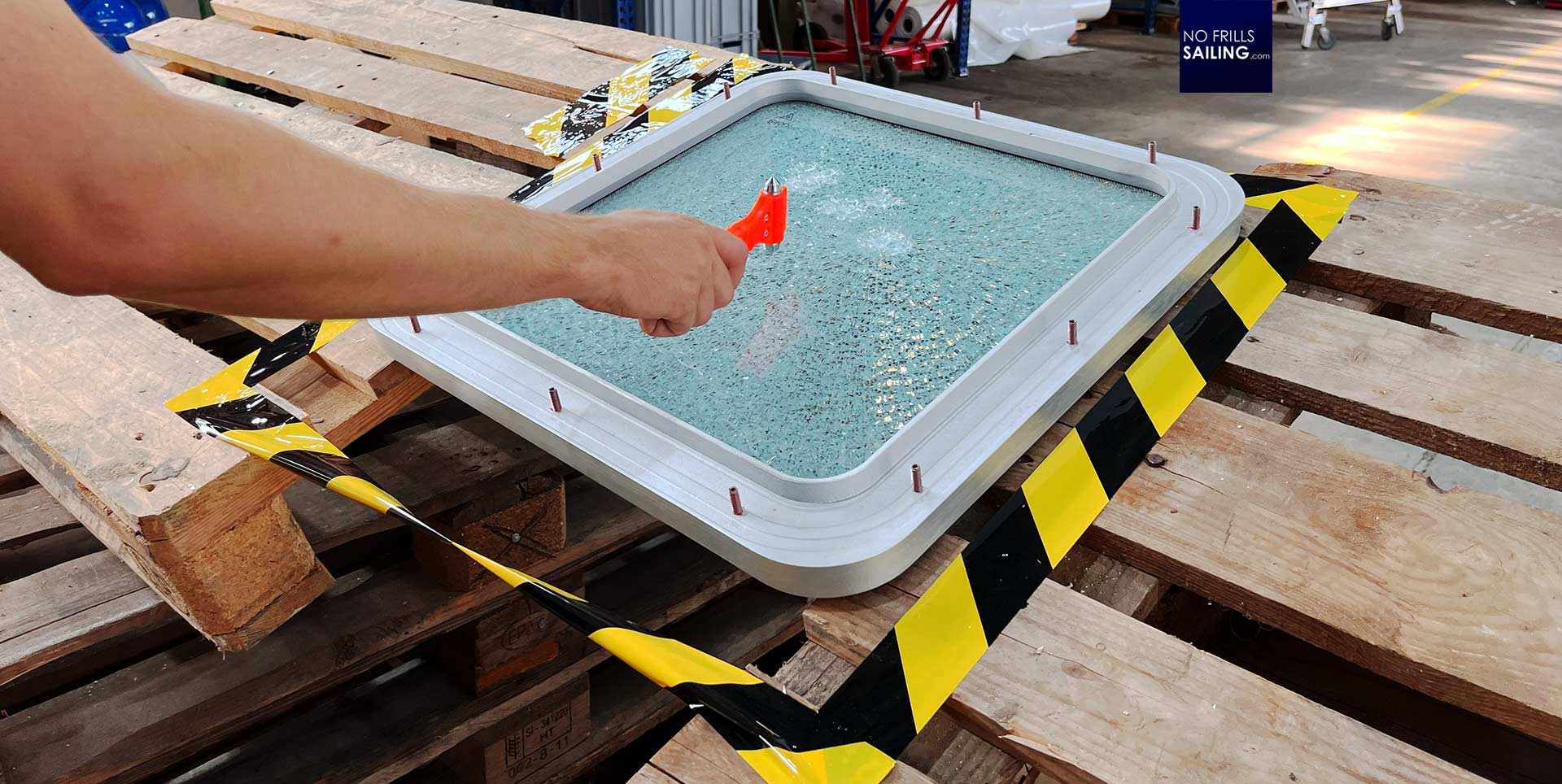
But again, it did not break up, fall out nor, as my colleague suggested, became so “soft” that one could simply press it outward. Just more and more shards flew around, this time in a larger radius, making the whole test a lot more dangerous. No matter how hard or how often I hit the glass with my hammer, the window won´t break or fall out.
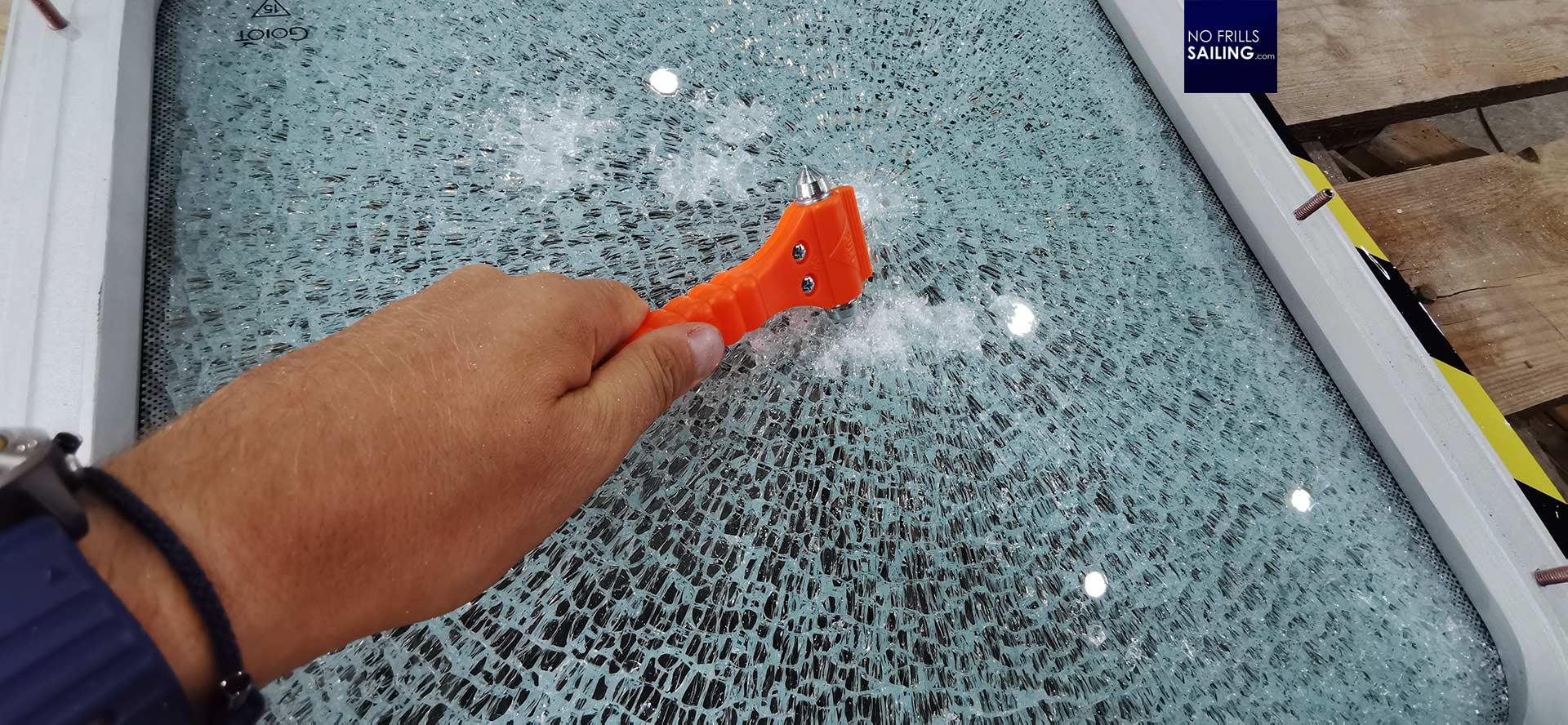
I stopped. My colleagues were a bit puzzled too. We never had expected this outcome: “Are we too stupid? Are we missing something here?” We asked ourselves. Sure, I did not use the original hammer, but a steel-spike is a steel spike, right? We looked closely onto the window if we had overlooked maybe a clear sign of a designated area – maybe the window must be hit at a precise location to make the window go? But we did not find such a mark. I raised my eyebrows. Well, that was it, I´d say.
Getting the big tools
But we weren´t finished yet. I went to the workshop and got a heavy duty (small) sledgehammer. Just to see if brute force can smash this safety glass once and for all. I started hitting the frame, at first a bit reluctant, then increasing the power. But to our astonishment, again, the already smashed glass held up pretty much all of the force, just letting go smaller fractions of splinters. What kind of material is that?!
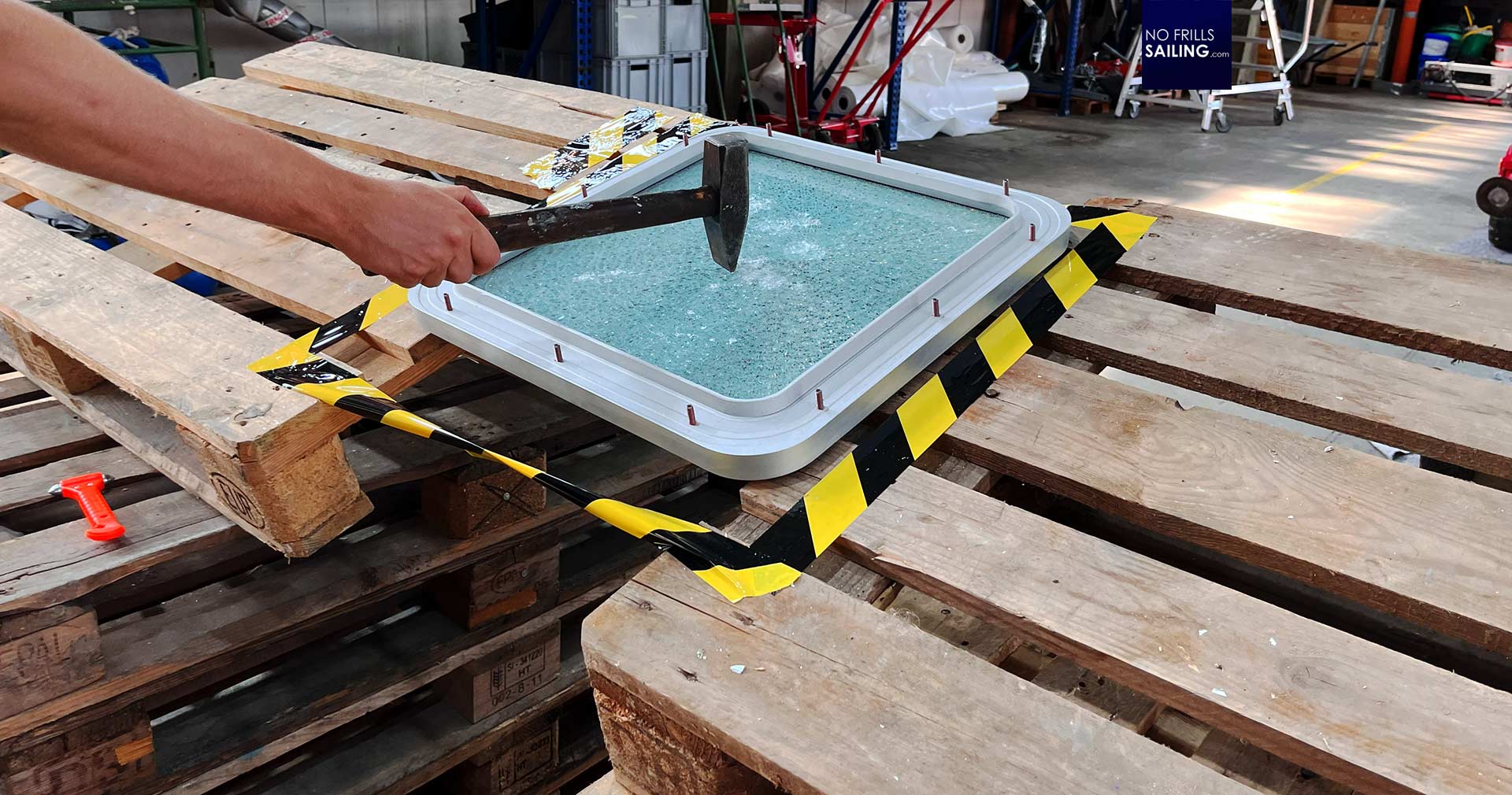
Then, finally, after I feel having hit that poor window a hundred times, at last, the glass gave way and opened up. It took me five hard hits to blow out a hole. This whole wasn´t wider than maybe centimeters. Maybe a mouse could have escaped now – not a man. More and more bigger shards fell down, it was real hard work to widen the hole. Again, we all had expected the glass to come off in bigger chunks, but I had to work my way centimeter for centimeter.
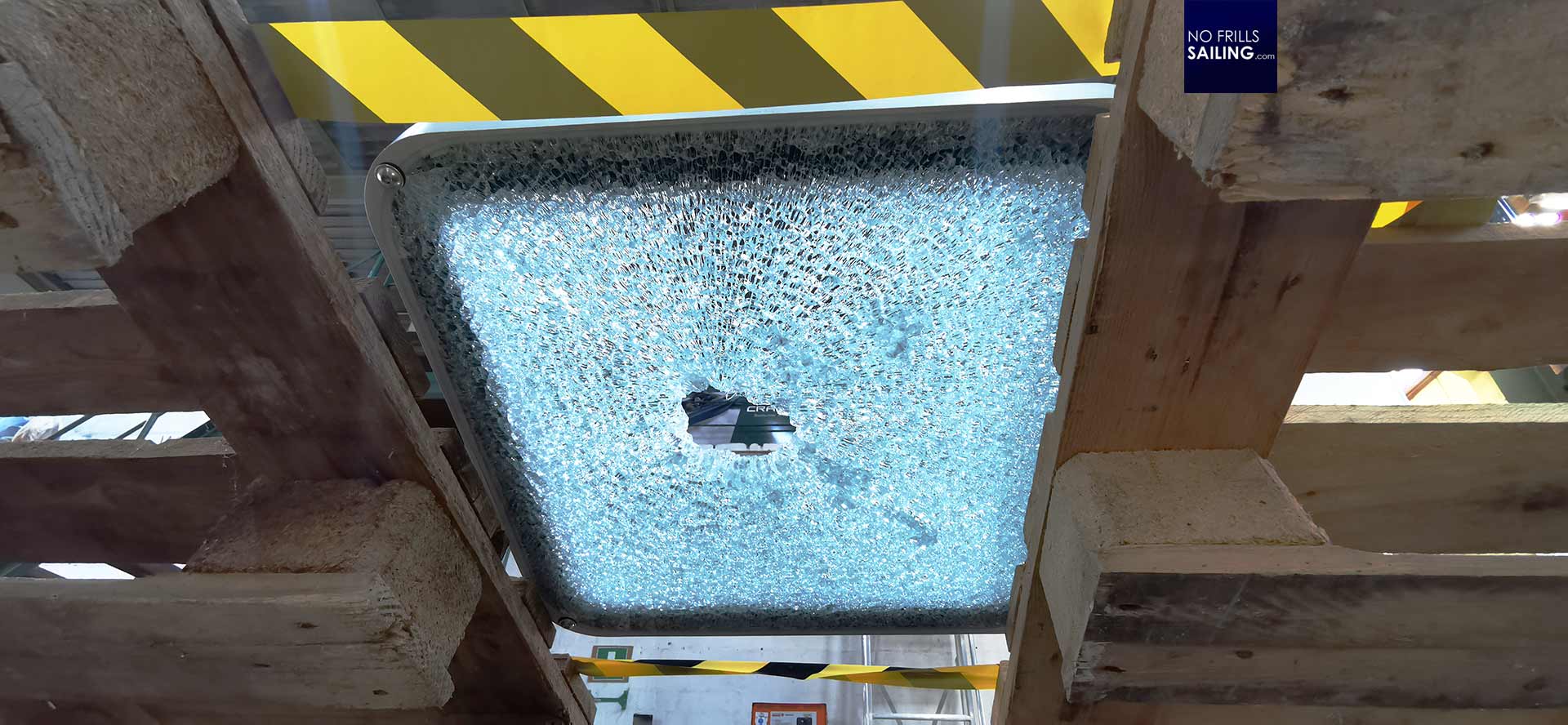
I stopped the experiment as more and more splinters flew around and my fellow colleagues had already increased their distance to the test rigging. The thickness of the tapered window and the sturdy resistance is absolutely staggering! I mean, this window really took a violent beating from steel tools, yet it did not give in. Amazingly rugged!
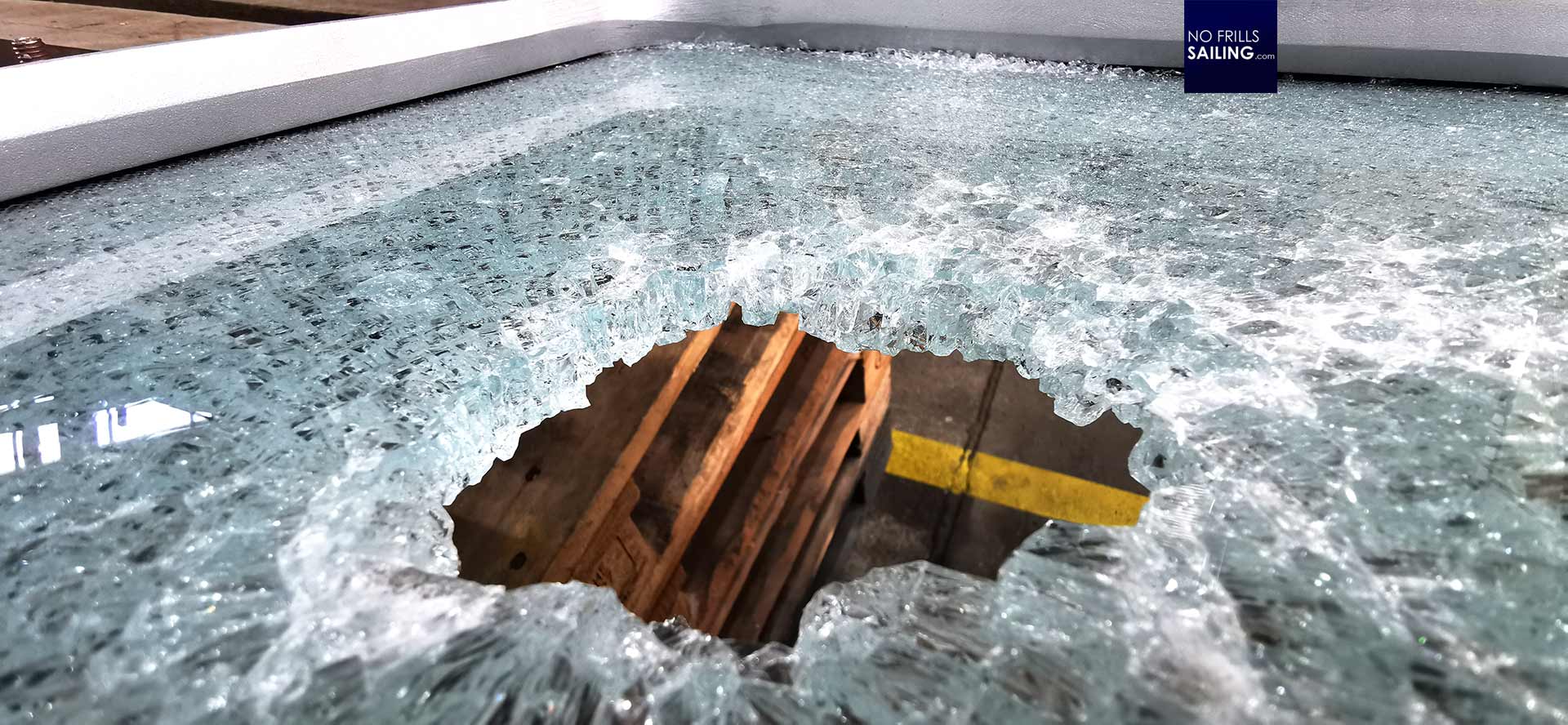
After some twenty minutes I declared the experiment to be finished. The floor was covered with tiny to bigger-sized chunks of sharp splinters. I wore shoes now, but seeing the whole area sparkle so nicely made me stop: It was enough that my feet and the right hand was bleeding (well, it sounds more dramatic than it was, but still: Blood is red) and I guess we all had seen enough to draw some conclusions from this escape window experiment.
What I´ve learned
First of all, it is far, far, far more difficult, complicated and really tough work to get such a safety glass window to shatter. I still don´t know what we could have done different but the idea of “just hit it after a capsizing, press it outside and rescue yourself” is just not feasible. I´ve tried the normal escape hammer and a heavy-duty sledgehammer and yet the window just shows a little hole.
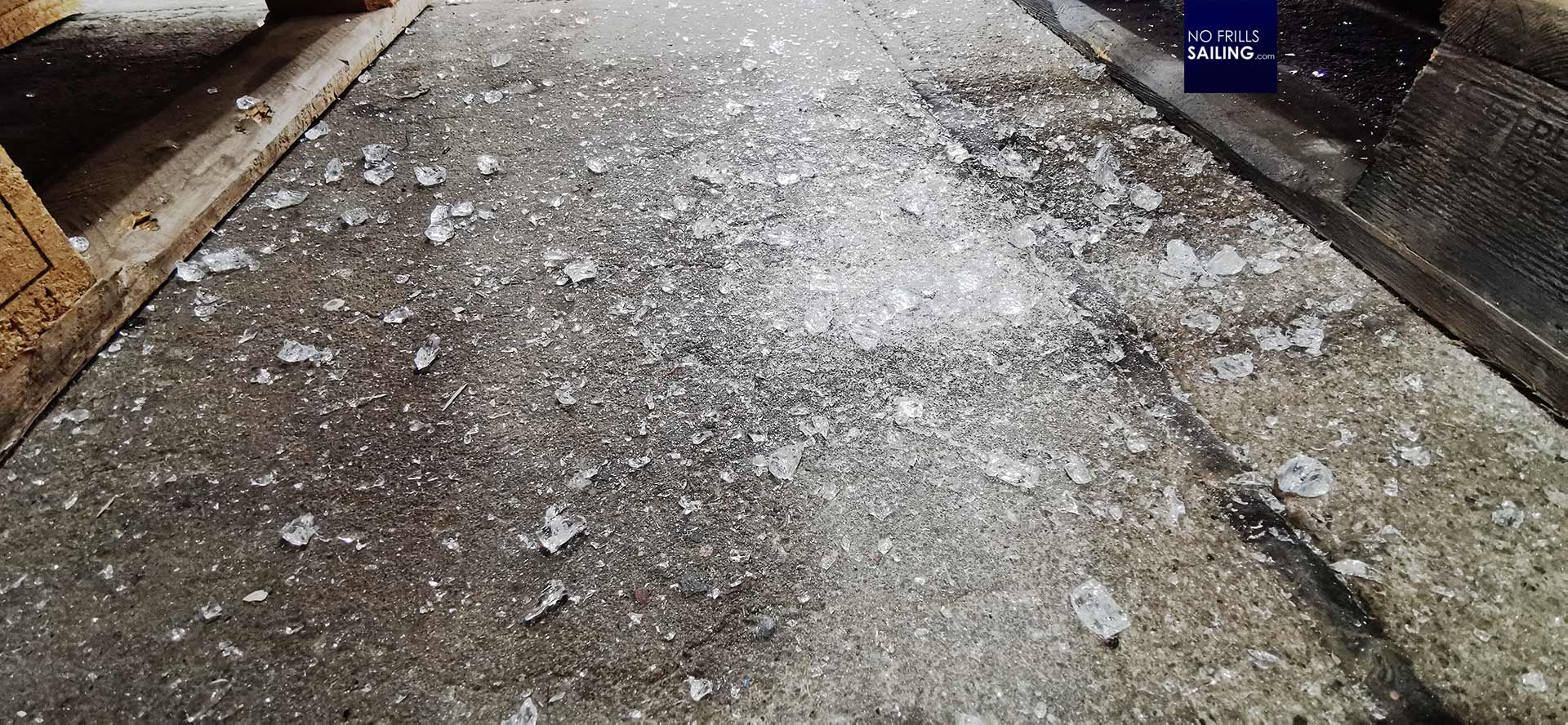
Secondly, if the worst case scenario of a capsizing event is taking place and you survive it, I find it difficult to imagine how you can smash the window above your head with shards falling down onto yourself whilst the boat subject to violent rocking, maybe you are barefoot, bleeding … my test now makes this horrific scenario even more frightening. Now that I know that the window simply won´t fall out of be crushed so easily. Let alone, imagining that children, even if briefed, could do this.
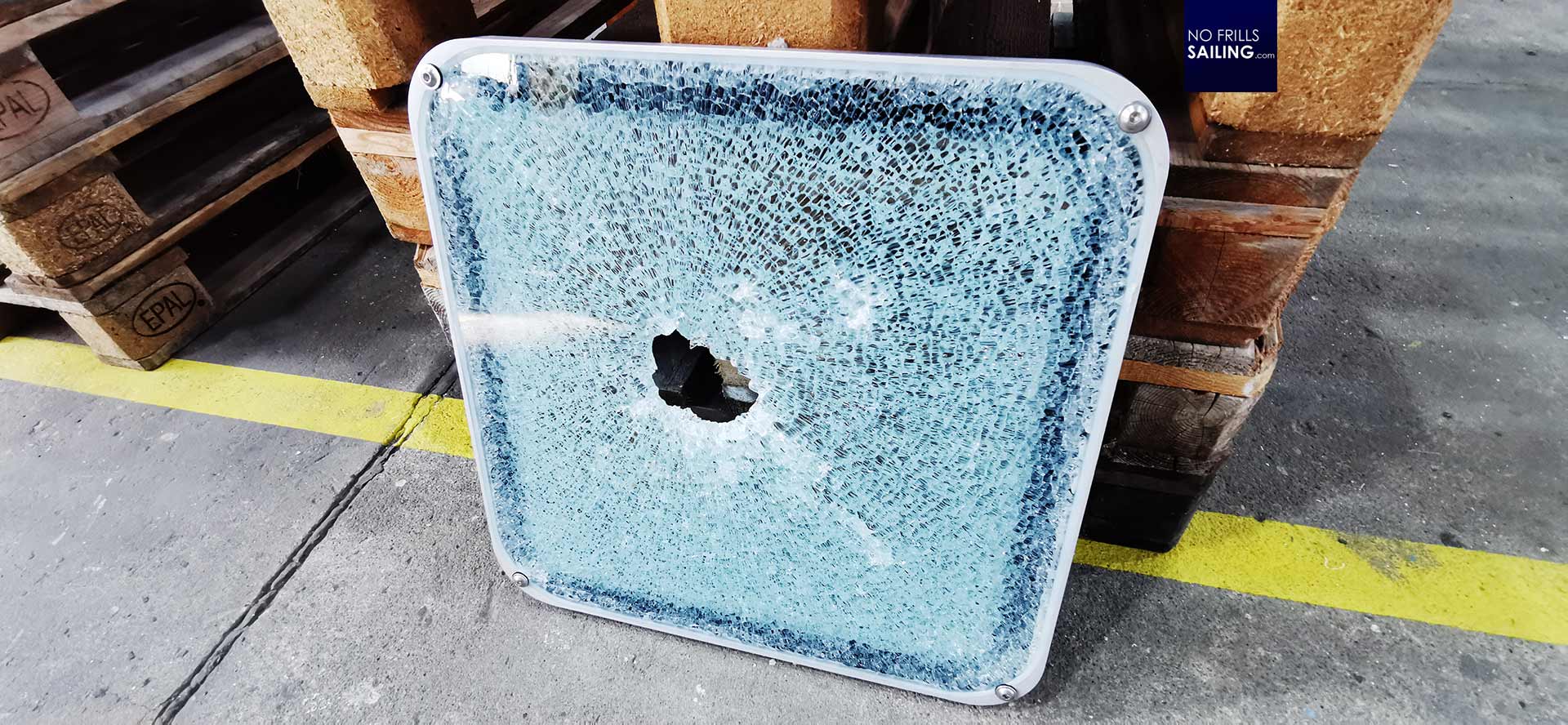
In this, the big, big learning is just this: Never capsize! Check the weather conditions, be alert, avoid storms at any cost and simply try everything to keep your boat upright!
To ease this a bit: Catamaran capsizing events are rare (thank God!) and I can confirm from my own experiences that those cats are far more stable than I initially thought. During my first ever delivery through the Bay of Biscay we met some pretty rough weather and impressive waves: The boat was rocking quite nicely making the whole crew hitting their bunks with severe seasickness. Being up for more than 30 hours in the dash through the Biscay during the storm I never had the feeling of losing control or being unsafe. So, I hope that the events portrayed here and the need to smash an escape window will never be reality!
If you have any input, also maybe on what we may have done “better” or where the trick is how a safety window is smashed, feel free to comment, I appreciate your input.
You might as well find interesting to read:
How to escape a capsized catamaran
Catamaran boost: Fast crossing the Bay of Biscay in a catamaran
The Race of Alderney: Catamaran trapped!
